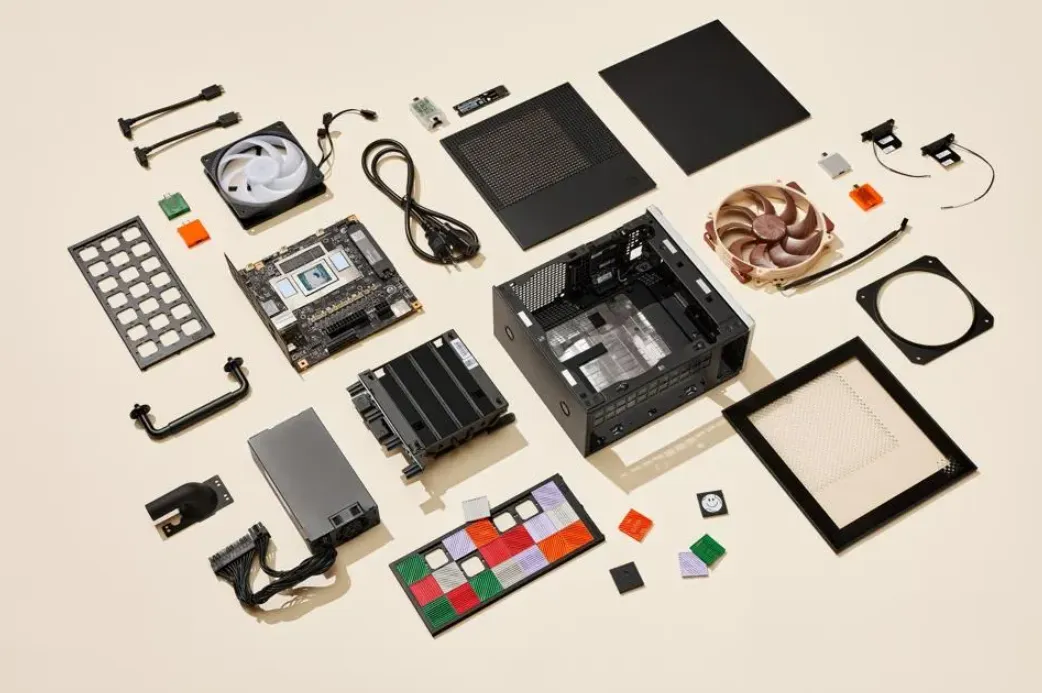AMD CEO Lisa Su recently confirmed that the highly anticipated Strix Halo APU will be expanding into the desktop PC market. This news has excited tech enthusiasts and signals new possibilities for compact high-performance PCs. As a revolutionary product, Strix Halo is AMD’s most powerful Accelerated Processing Unit (APU) to date. Its integrated graphics performance rivals that of modern entry-level discrete GPUs, delivering strong processing power to desktop systems without requiring a dedicated graphics card.
Strix Halo is designed primarily for mobile platforms and differs from the traditional Strix Point Zen 5 series. Its key highlight is an integrated GPU with up to 40 Compute Units (CUs) based on the RDNA 3.5 architecture, paired with up to 128GB of LPDDR5X-8000 memory. This configuration provides exceptional graphics performance. According to benchmark tests, the Ryzen AI MAX+ 395 (the flagship model in the Strix Halo series) outperforms the Nvidia RTX 5080 by more than three times in the DeepSeek R1 AI benchmark, thanks to its memory advantage. Moreover, its power consumption is only 140W—far lower than the 300W+ of traditional high-performance GPUs. The CPU component includes 16 Zen 5 cores with multi-threading support, making it well-suited for gaming, content creation, and AI computing.
Because Strix Halo is optimized for mobile devices, it uses an FP11 interface instead of the AM5 socket commonly found in desktop PCs, meaning it is not directly compatible with existing AM5 motherboards. However, AMD appears to have a solution. Last year, Minisforum successfully adapted mobile Ryzen 7745HX and 7945HX processors for desktop use with the BD770i and BD790i motherboards. These custom Mini-ITX motherboards feature a PCIe 5.0 x16 slot and dual M.2 PCIe 5.0 storage interfaces, offering flexible expansion for compact PCs. A similar approach could be key to bringing Strix Halo to the desktop market.

In a recent interview on Bilibili, ASUS China General Manager Yu Yuanlin suggested to Lisa Su that Strix Halo should be applied to desktop PCs. Su responded affirmatively: “Yes, of course!” Her response may not only hint at custom motherboard solutions but also innovative platforms like the Framework Desktop. Framework recently launched a 4.5L Mini-ITX desktop PC supporting the Ryzen AI MAX+ 395, paired with 128GB of memory and a 400W power supply. This setup showcases Strix Halo’s potential in desktop computing. Despite lacking a discrete GPU, its powerful integrated graphics are sufficient for modern gaming and professional workloads.

The desktop adoption of Strix Halo presents several advantages. For gamers, it can run demanding titles like Spider-Man 2 at 1440p resolution with high-quality settings and FSR enabled, reaching over 90 FPS. For creators and AI developers, its high-bandwidth memory and XDNA 2 NPU (capable of 50 TOPS) provide robust local computing power, making it ideal for running large language models and video generation tools. Compared to traditional desktops, Strix Halo-based systems consume less power, take up less space, and enable OEMs to develop portable mini PCs to meet the demand for compact computing solutions.
However, there are some limitations. Since the processor is soldered onto the motherboard, users cannot swap out the CPU or upgrade the cooling solution as they would with AM5 platforms. While this design sacrifices some flexibility, it improves integration and power efficiency. For users seeking a balance between performance and portability, this trade-off might be worthwhile. The Minisforum BD790i motherboard is priced at around $519, while the Framework Desktop is expected to cost $1,999 (top configuration), indicating that these products are positioned for the high-end market.
AMD’s move could reshape the desktop PC landscape. Traditionally, compact systems have been limited by performance constraints, but Strix Halo breaks that barrier. It offers console-level gaming experiences for gamers and an efficient workstation option for professionals. OEMs may introduce more Strix Halo-based innovations in the future. For instance, GMK’s EVO-X2 mini PC recently debuted at an AI PC summit, receiving Lisa Su’s signed approval.
AMD has yet to reveal an official launch timeline for desktop Strix Halo solutions, but its technological potential is undeniable. As more details emerge, this APU could become a major highlight in the tech industry in 2025, paving the way for a new era of compact high-performance computing.
